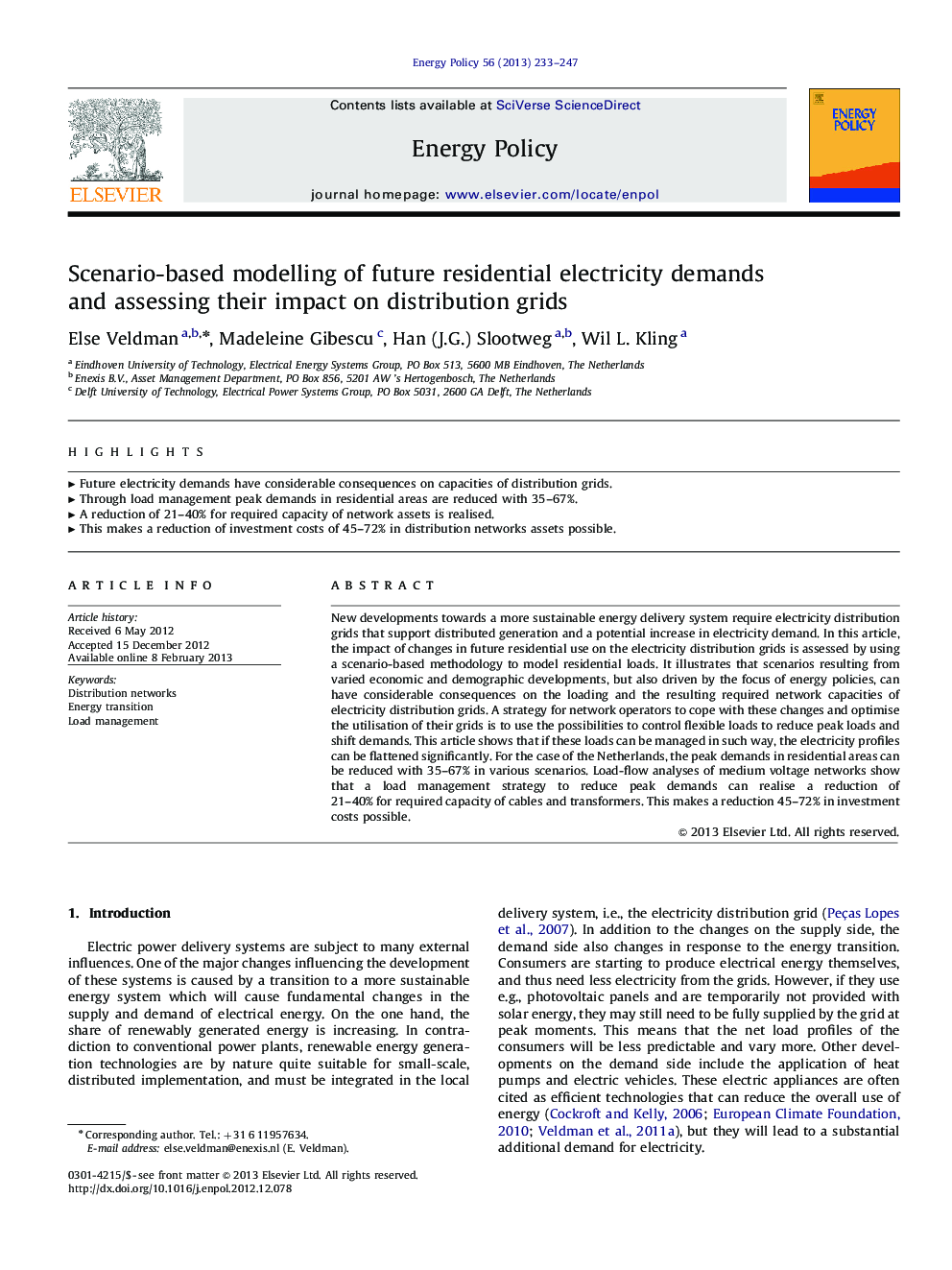| کد مقاله | کد نشریه | سال انتشار | مقاله انگلیسی | نسخه تمام متن |
|---|---|---|---|---|
| 994781 | 1481302 | 2013 | 15 صفحه PDF | دانلود رایگان |

New developments towards a more sustainable energy delivery system require electricity distribution grids that support distributed generation and a potential increase in electricity demand. In this article, the impact of changes in future residential use on the electricity distribution grids is assessed by using a scenario-based methodology to model residential loads. It illustrates that scenarios resulting from varied economic and demographic developments, but also driven by the focus of energy policies, can have considerable consequences on the loading and the resulting required network capacities of electricity distribution grids. A strategy for network operators to cope with these changes and optimise the utilisation of their grids is to use the possibilities to control flexible loads to reduce peak loads and shift demands. This article shows that if these loads can be managed in such way, the electricity profiles can be flattened significantly. For the case of the Netherlands, the peak demands in residential areas can be reduced with 35–67% in various scenarios. Load-flow analyses of medium voltage networks show that a load management strategy to reduce peak demands can realise a reduction of 21–40% for required capacity of cables and transformers. This makes a reduction 45–72% in investment costs possible.
► Future electricity demands have considerable consequences on capacities of distribution grids.
► Through load management peak demands in residential areas are reduced with 35–67%.
► A reduction of 21–40% for required capacity of network assets is realised.
► This makes a reduction of investment costs of 45–72% in distribution networks assets possible.
Journal: Energy Policy - Volume 56, May 2013, Pages 233–247